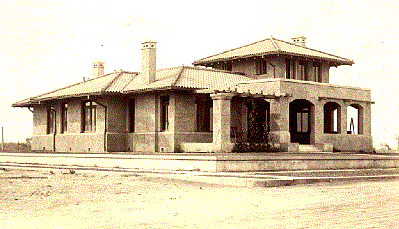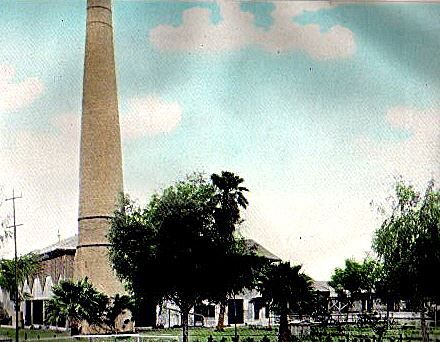BY NORMAN ROZEFF
EDITOR’S NOTE: This is the latest installment in an ongoing series on San Benito’s Sam Robertson. Find the previous parts at www.valleystar.com.
Development
Company Formed
Following this February 1905 trip, Mr. Yoakum placed quite a sum of money at my disposal and instructed me to get up further data on the irrigation project. He caused options to be taken on about 45,000 acres which Lon Hill, Sr. owned at Lonsboro and where Mercedes is now located, and they continued to option or purchase several more tracts including the Llano Grande or Withers Tract.
They organized the American Rio Grande Land & Irrigation Company and elected Mr. Tom Carter president and Judge S. Silver, General Manager. Judge Silver came down in March, 1905 and I showed him over the project.
Early in 1905 I completed the preliminary data Mr. Yoakum desired and I got out as engineer and was promised contract for canal construction for the first unit of the American Rio Grande canal, which contract I started in April, 1906 and finished in November, 1906.
Lavishes All On Bessie
In 1905 Mr. Yoakum told me to drop the Bessie or Landrum land and I told him I would put that project through on my own “hardness”. In 1905 I built as a contractor, Santa Maria Canal and took a Railroad contract on Trinity and Brazos Valley Railroad and early in 1906 I got started on the Mercedes Canal contract. Mr. Chester B. Davis was the chief engineer for the Land Company and had offices in a boxcar at Lonsboro, but later he laid out Mercedes and moved his headquarters there. He built a large power house, installed a large power plant, built a transmission line to the River and operated pumps with electrical current.
I finished my canal contracts at Mercedes by November 10th, 1906 and moved my construction outfit to Bessie and started what is now the San Benito, or Cameron County Water District No. 2 project. I had picked up about $40,000 in 1905 and 1906 on the Mercedes and Santa Maria contracts and my Railroad contract on Trinity and Brazos Valley Railroad, and I jumped into this new canal and land promotion which eventually consumed over $2,500,000. I merely bet $40,000 that I could raise the balance needed by April, 1907. My last centavo was spent; but by that time I got O. W., Alba, and Scott Heywood; R. L. Batts and Ed. Rowson; Bill Stenger and A. C. Swanson interested and we formed the San Benito Land and Water Co. paid for by Hix Landen (sic) land; bought 10,000 more acres from Combe Bros. and about 19,000 from Mrs. Agnes Browne and others.
“Had a Good Time Losing It”
We sold $105,000 of bonds, land and town lots and soaked it all in the San Benito Project. I personally made much money on the construction contracts on other canals, drainage, ditches, railroads, flood levees, and dumped it all into San Benito AND lost it all, but have no regrets on account of financial loss for I had a good time losing it.
We had to have a Railroad icing plant to ice cars at San Benito, Harlingen and Bay City, and built plant at each town. I took the contract for car icing from the Railroad Company.
The Mexican Revolution starting in 1910 eventually caused the Gulf Coast Line to go into the hands of receiver and canceled our car icing contract. This lost us plenty of money. We had thousands of acres of sugar cane at San Benito, so we had to have a sugar mill costing about $350,000. We built and operated it, but instead of getting 350 pounds of sugar from a ton of cane we got 87 pounds, so the mill went into bankruptcy and the C. P. & L. Company bought the sugar company’s boilers, buildings, etc. for $30,000. These sugar mill buildings now house the C. P. & L. Company’s splendid electric plant. Sugar mills and plantations at Harlingen, Brownsville and Donna went the same way as the rice and the sugar, and the experiences are now almost forgotten.
Spider Webb R. R., 1909
The San Benito Project is only about four and one-half miles wide along the railroad; about twenty-five miles long from the River northeast to the Arroyo Colorado. By 1909 our San Benito land sales force had sold nearly all company lands within five miles of the railroad. One night our land salesmen, Messrs. Frazier, Martin and others, broke the sad news to me that they could not sell land over five miles from the railroad track, so we held a council of war. The salesmen said they could get at least $25.00 per acre more for land if it was from one to three miles off a railroad track, so by midnight I agreed to build a Railroad from San Benito to La Paloma, thence up the Rio Grande parallel to Military Road to San Benito pumping plant near Los Indios, thence looping back towards San Benito to a junction two and one-half miles south of San Benito with a loop branching off the Los Indios line on to Santa Maria via Rangerville, with another line from San Benito north to Rio Hondo, on to Fernando, 8 miles northeast of Rio Hondo.
The full Board of Directors of San Benito Land & Water Company were at San Benito to discuss our troubles when I proposed to the Board to build this above mentioned railroad, if the Land and Water Company would give me a lien on all the unsold land of $10.00 per acre for land within one mile of railroad track and $5.00 per acre for land less than two miles from track. I was to get my lien notes when the Railroad was built and in operation. The Board of Directors quickly called my bet; James Landrum and Lon Hill and other property owners came in on same basis. I started grading on the Spider Web Railroad, as we called it, within twenty-four hours after promising the land salesmen to build the Railroad. I jumped on the train and went to Palestine, Texas and arranged to purchase the necessary steel, ties, and junk locomotives and cars from George M. Dilley and son, entirely “on jaw bone”. However, Mr. Dilley was quite sure I could unload on either the Frisco or Southern Pacific. We also built at this time on same land bonus plan, from the Rio Grand through Mission to Monte Christo. Later most of the lines I showed on the Spider Web were built, including Brownsville street railways, since torn up.
“$150 In My Pocket,” 1917
Mr. Dilley’s guess was okay and he got his money and I made a nice little profit and proceeded to blow the profit in on the San Benito project.
Mexico was overthrown and conditions remained bad for over 20 years. The Yoakum-Frisco-Rock Island crowd went to broke because of conditions in Mexico. Bandits raided the border until 1916. Over 500 families left San Benito tract during bandit trouble, but many stayed on out in the brush. I cannot remember any land promoters during the above mentioned time who made any money. I managed to get away to France with the United States Army with about $150 in my pocket and left my wife at home with the same amount and a nice mortgage on our home, but from 1903 to 1917, I had a grand time in the Valley working an average of twenty hours a day, seven days a week. There was not a dull minute so to H—- with money if you have interesting work.”






